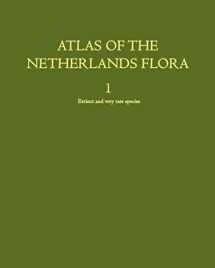
Atlas of the Netherlands Flora: Extinct and very rare species (Atlas of the Netherlands Flora, 1)
ISBN-13:
9789061936053
ISBN-10:
9061936055
Edition:
1
Author:
J. Mennema, A.J. Quene-Boterenbrood, C.L. Plate
Publication date:
1980
Publisher:
Springer
Format:
Hardcover
229 pages
FREE US shipping
on ALL non-marketplace orders
Marketplace
from $149.49
USD
Marketplace offers
Seller
Condition
Note
Seller
Condition
Used - Very Good
No International Shipping
Book details
ISBN-13:
9789061936053
ISBN-10:
9061936055
Edition:
1
Author:
J. Mennema, A.J. Quene-Boterenbrood, C.L. Plate
Publication date:
1980
Publisher:
Springer
Format:
Hardcover
229 pages
Summary
Atlas of the Netherlands Flora: Extinct and very rare species (Atlas of the Netherlands Flora, 1) (ISBN-13: 9789061936053 and ISBN-10: 9061936055), written by authors
J. Mennema, A.J. Quene-Boterenbrood, C.L. Plate, was published by Springer in 1980.
With an overall rating of 4.2 stars, it's a notable title among other
books. You can easily purchase or rent Atlas of the Netherlands Flora: Extinct and very rare species (Atlas of the Netherlands Flora, 1) (Hardcover) from BooksRun,
along with many other new and used
books
and textbooks.
And, if you're looking to sell your copy, our current buyback offer is $0.3.
Description
There is an element of fascination which many people feel about geographical maps, because these maps allow fantasies about strange landscapes, other peoples, travels, even adventures. Distribution maps, depicting the area which a plant (or animal) species occupies, would appear to be less romantic, but they are equally able to exercise our imagination, or rather: to stimulate our scientific curiosity. Some distribution patterns are repeated time and time again, although rarely fully identical, and with their study comes the inescapable question: what is it that determines a plant's area of distribution? Almost immediately we find ourselves in the area of ecology, for it is the plant's demands of its environment (climate, soil) which determines where it will be able to grow and where not. However, that is not all there is to it, for species as well as landscapes have their history, and one needs to be informed about the climate and about the distribution of land and sea in the past, for instance, before one can understand present distributions. This aspect of change in space and time (historical plant geography) is possibly the most fascinating part of plant geography. However this atlas, covering a minuscule part of the world, is not meant to be primarily a book of historical plant geography. It is true that a dynamic aspect is very prominent, but this is on the smaller time-scale of man-made changes, which mostly led to impoverishments.


We would LOVE it if you could help us and other readers by reviewing the book
Book review

Congratulations! We have received your book review.
{user}
{createdAt}
by {truncated_author}


